July 04, 2016
As we know, fiber optic jumper cables are designed to interconnect or cross connect fiber networks within structured cabling systems. One common application of fiber optic jumper cables is in data centers to interconnect ports and transceivers that accept LC and MPO/MTP fiber optic connectors. There are a full range of cost-effective fiber optic patch cable solutions which can meet your demands now and even for your upgrades in the future. In this post, we will demonstrate the high-speed fiber patch cable solutions for 10G, 40G, and 100G Ethernet transceiver ports interconnection.
Today's data centers are still primarily architected around 10 Gigabit Ethernet (GbE). After almost ten years of revolution, SFP+ optical transceiver gradually becomes the main stream of 10G transceiver in data center optics market. According to the optical ports of SFP+ form factor, LC duplex fiber patch cable is required to complete the link between two SFP+ transceiver modules which are plugged into switches, routers or server NICs (Network Interface Cards), as shown in the following picture. High quality standard LC duplex patch cables are available in both single-mode and multimode versions, which are LC LC single-mode duplex fiber cable and LC LC multimode duplex fiber cable. With a wide range of material options, they can meet any working environment.
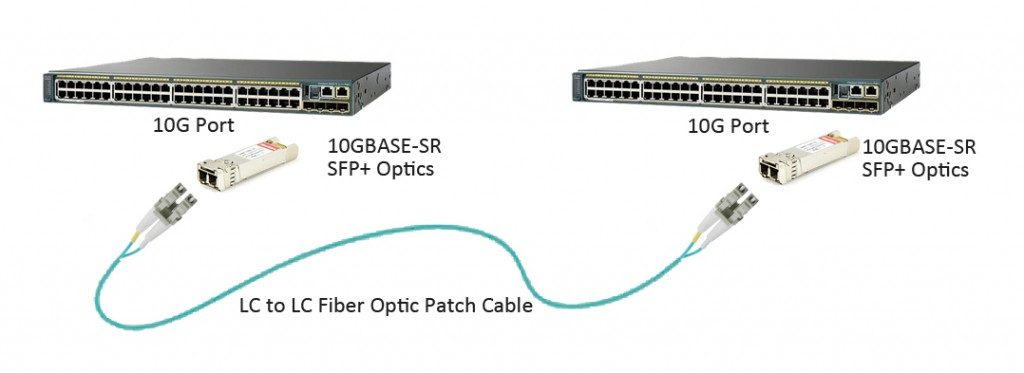
In recent several years, 40 GbE has gained more popularity and the market of 40GbE is encouraging. As data centers tend to deploy 40G Ethernet, 40G transceivers are ramping up. QSFP+ (quad small form-factor pluggable plus), as the most popular form factor for 40 GbE, has been widely used in data center switching fabrics. For the short reach interconnection between two QSFP+ optical transceiver ports, each QSFP+ module requires an MPO/MTP connection, as shown in the following picture. MTP to MTP (or MPO to MPO) assemblies can also be in single-mode or multimode versions, with jacket ratings of riser, plenum or LSZH. Users can easily upgrade their networks to future 40/100G applications with popular multimode OM3 and OM4 cable assemblies. Note: For single-mode 40G QSFP+ interconnection, duplex LC single-mode patch cable is commonly used; but for 40GBASE-PLRL4 QSFP+ interconnection, a 12-fiber MPO/MTP single-mode cable is needed.
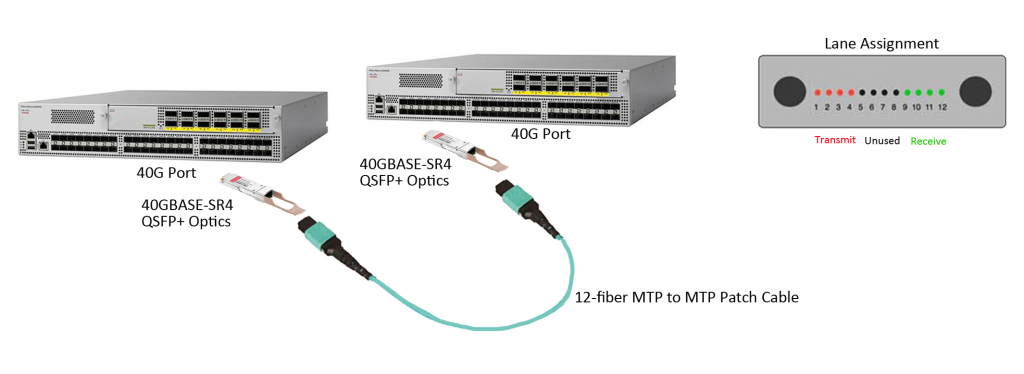
Other than the QSFP+ to QSFP+ connection, a single QSFP+ port (4 x 10 Gbps) can also breakout to four SFP+ ports, which is another interconnected solution for 40G transceiver. Using an MPO/MTP to LC assemblies, as shown in the following picture, can easily achieve the migration of 10G to 40G.
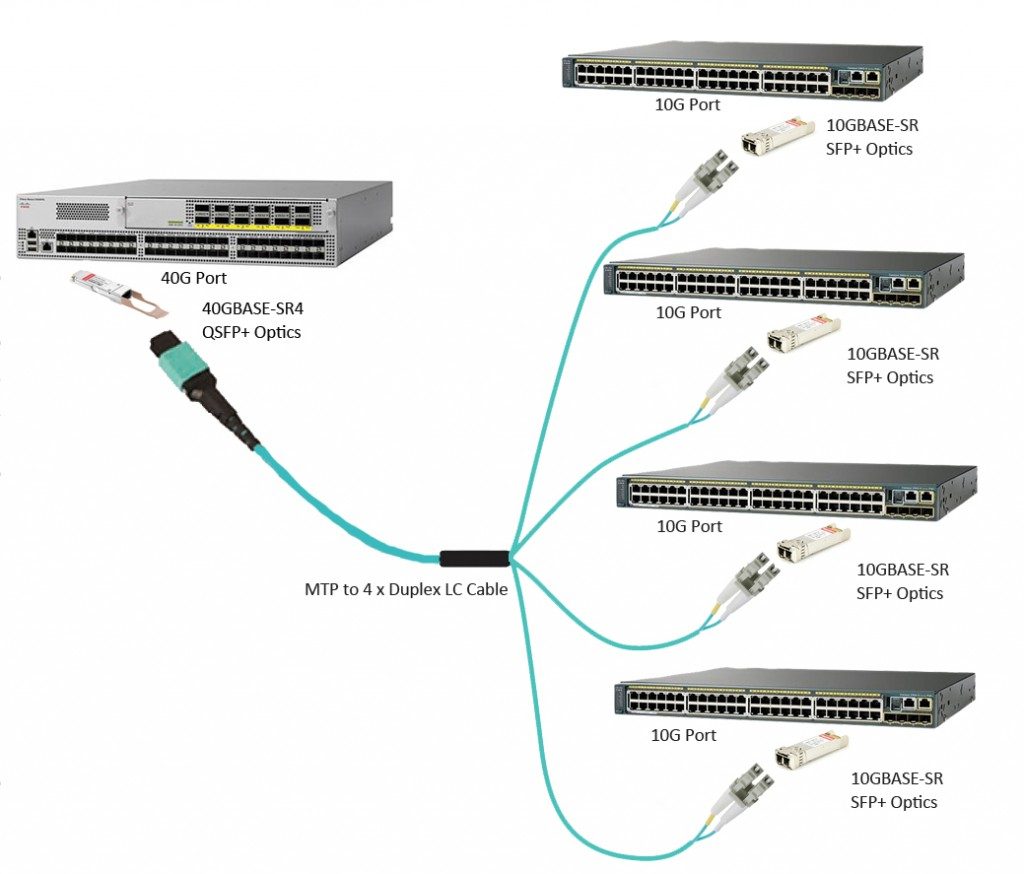
As the increasing bandwidth requirements of private and public cloud data centers and communication service providers, 100GbE has been growing rapidly and 2016 is considered as the year of 100G. Various 100G transceivers, such as CXP, CFP, CFP2, CFP4 and QSFP28 are available for different applications requiring data rates of 100G.
24-fiber MPO/MTP assemblies, implemented with 10 lanes of 10 Gbps, are ideal for 100GBASE-SR10 CXP/CFP to CXP/CFP interconnection in data center. Among the 24 fibers, only 20 fibers in the middle of the connector are used to transmit and receive signals at 10 Gbps and the 2 top and bottom fibers are unused. The picture below shows the interconnection between two 100GBASE-SR10 CXP ports.
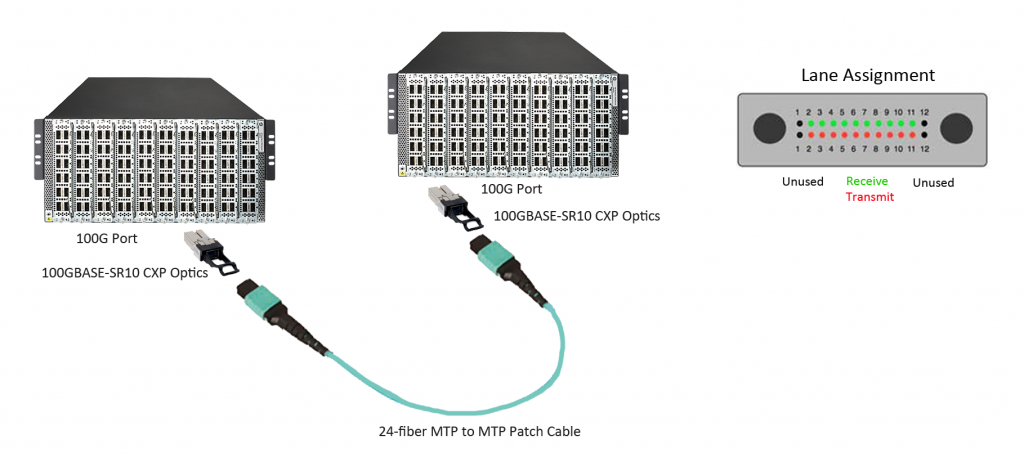
QSFP28 optical transceiver has the exact same footprint as the 40G QSFP+ module, but QSFP28 is implemented with four 25Gbps lanes. To interconnect a multimode QSFP28 link, a 12-fiber MPO/MTP patch cable is required, but for a single-mode link (100GBASE-LR4 QSFP2![]() , a duplex LC single-mode patch cable is required. The interconnection of QSFP28 multimode link is similar with the case of 40GBASE-SR4 QSFP+.
, a duplex LC single-mode patch cable is required. The interconnection of QSFP28 multimode link is similar with the case of 40GBASE-SR4 QSFP+.
As mentioned above, 100GBASE-SR10 CXP/CFP module uses ten 10Gbps lanes to achieve 100Gbps data rate. Thus, a CXP/CFP port can be breakout to ten SFP+ ports using a 24-fiber MTP to LC harness cables, as shown in the following picture.
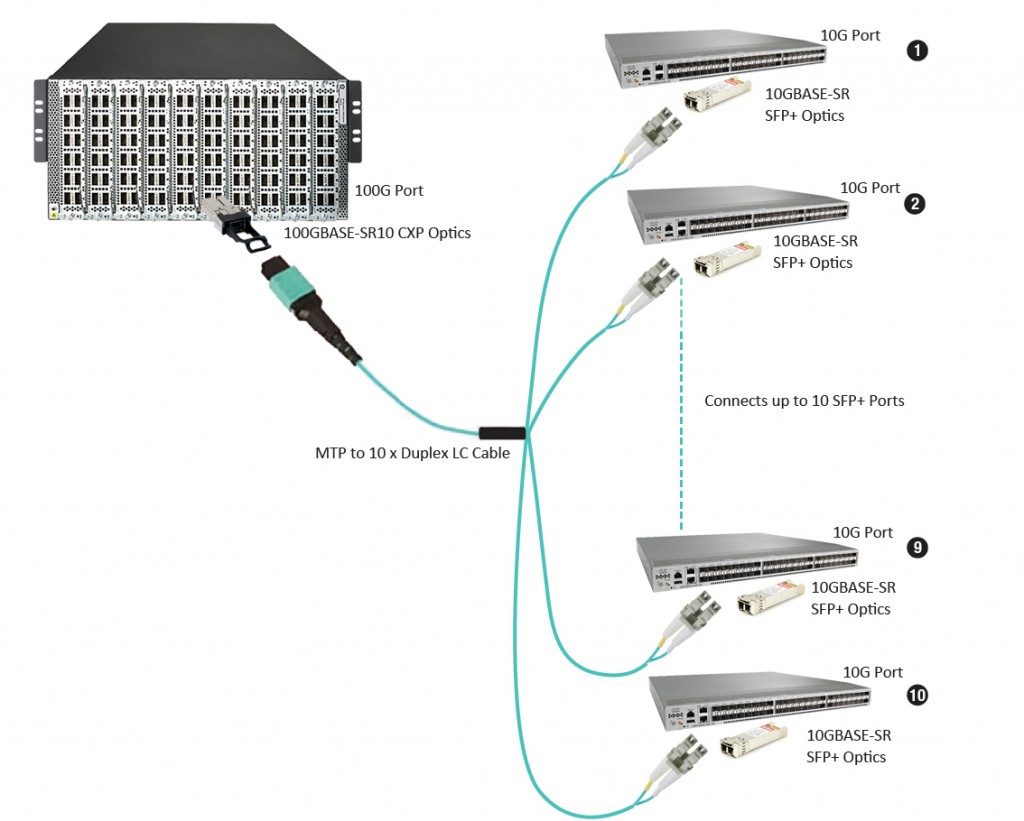
High-speed fiber patch cables are required for modern data centers. Different high-speed fiber patch cable solutions are available for your 10G, 40G, and 100G Ethernet transceiver ports interconnection. You can make the appropriate choices based on your needs and requirements.
Posted by: jowang at
06:32 AM
| No Comments
| Add Comment
Post contains 699 words, total size 7 kb.
35 queries taking 0.0145 seconds, 70 records returned.
Powered by Minx 1.1.6c-pink.









